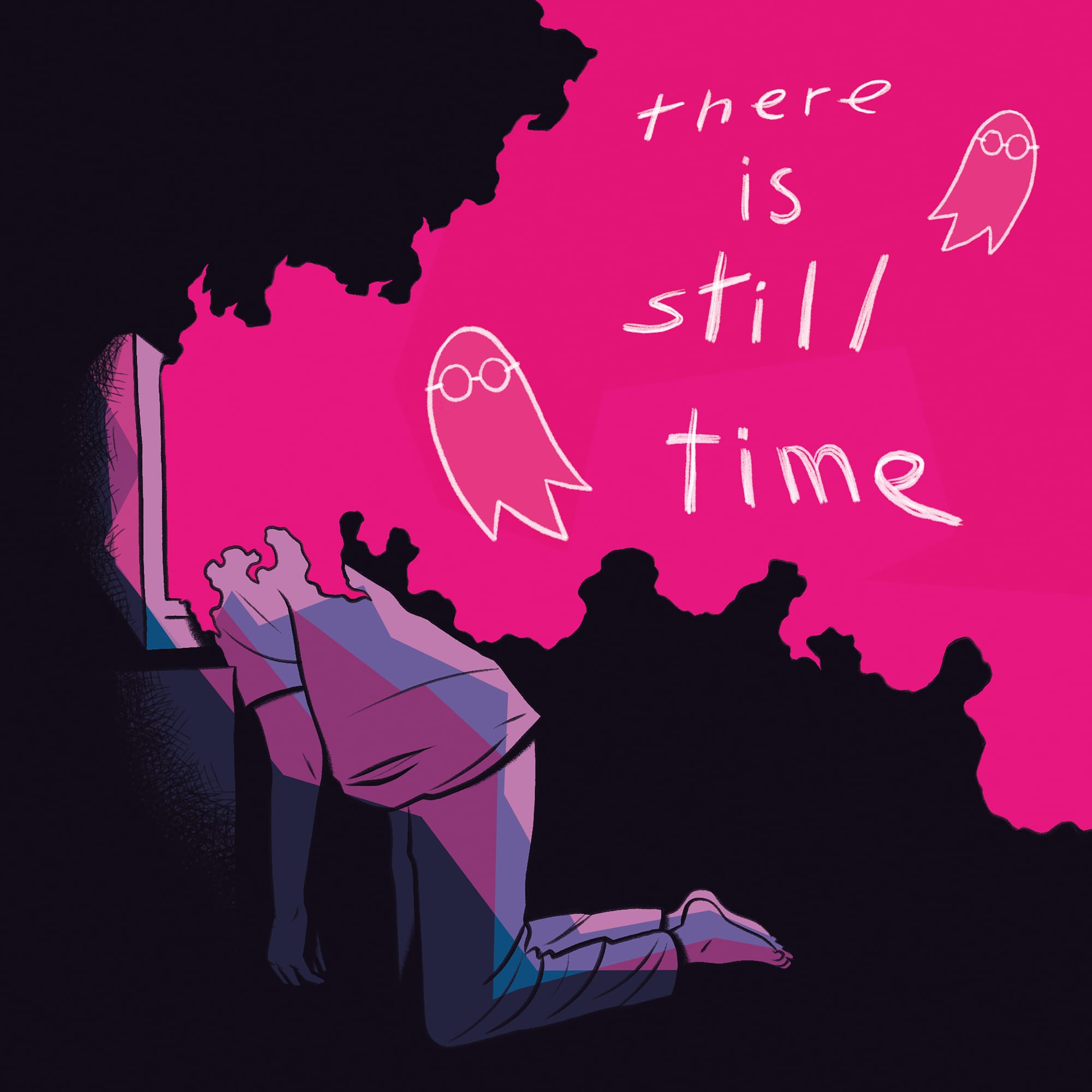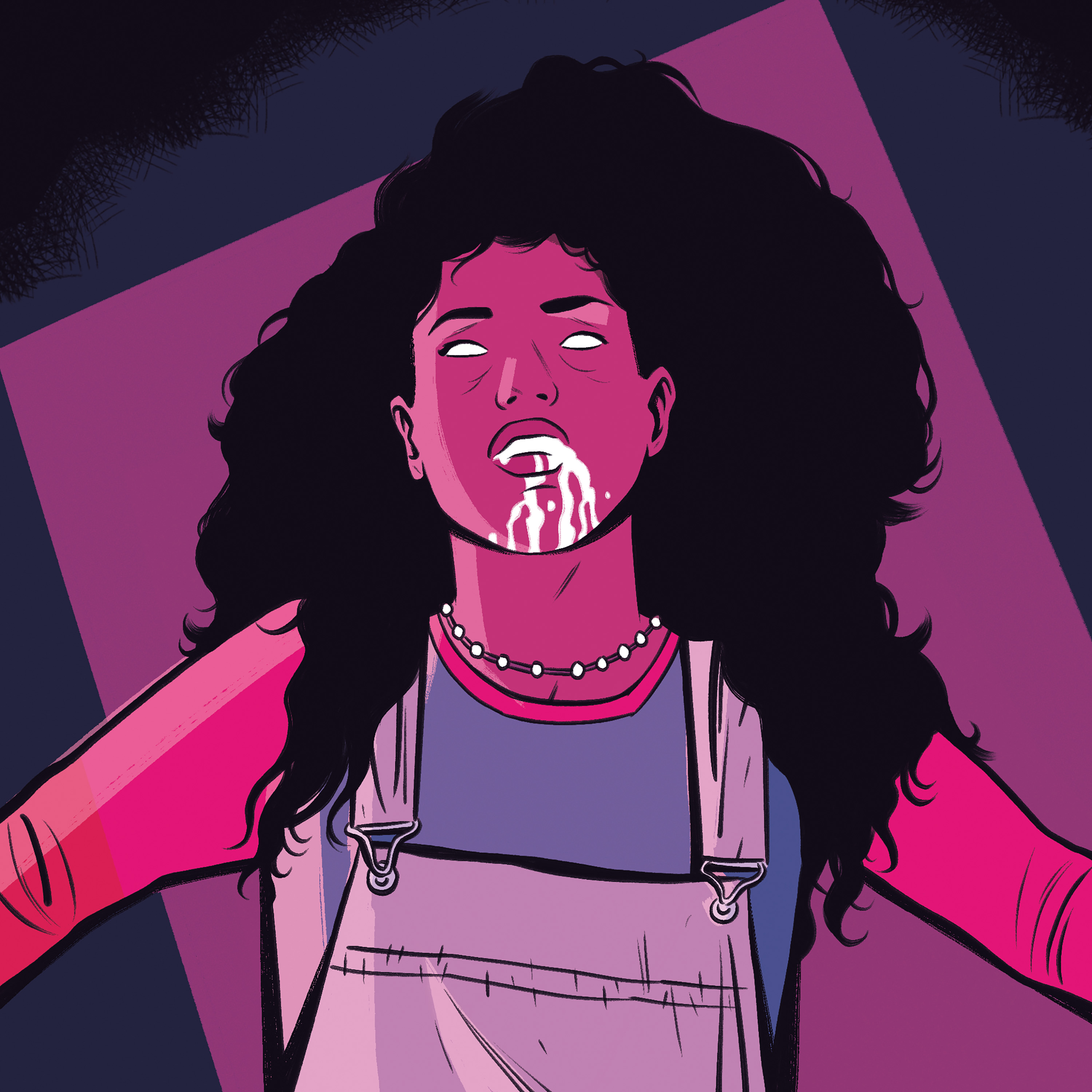Haunted by the 90s
On Episode Guides, Queer Aesthetics, and hanging out at The Bronze

I Saw the TV Glow (2024) Dir. Jane Schoenbrun
Two 90s teens, Owen and Maddy, become friends over a shared interest in a TV show called The Pink Opaque. The show is cancelled at the same time that Maddy goes missing.
“I am a big believer that the opening line of a pilot (or the opening image, or the teaser) should be the series in microcosm [...] The Buffy pilot teaser? Remember, it was that bit that looked like the girl was about to be munched by a vampire, but in fact SHE was the vampire? It told you to throw out your dramatic expectations, that danger could come from anywhere, and that women were going to have some power in this world. It was Buffy's own story, but told from the vampire side first.” - Jane Espenson (Buffy, Gilmore Girls)
“Isn't that a show for girls?” - Frank
Jane Schoenbrun’s third film, I Saw the TV Glow, opens with a scene of a young boy dancing under a giant tarp that is decorated with the colours of the trans flag, soundtracked by a cover of Broken Social Scene’s Anthems for a 17 Year Old Girl. In retrospect this is, perhaps, on the nose. But within the context of the film’s dreamy, mesmerising rhythms, it quietly sneaks past you - only for its full implications to be made clear in the final third of the film.
I was a teenager in the 90s. Thanks to illness, I spent a large portion of that time in bed. As with a lot of teenagers, I found solace in pop culture, and TV shows especially. Without wanting to sound like I’m entirely composed of dust, there were no DVD box sets or streaming then. If you missed an episode, that was it. Better hope it wasn’t an important one.
My dad would go to car boot sales on weekends. He’d discover boxless ex-rental tapes of Star Trek: Deep Space Nine, The X-Files and Buffy the Vampire Slayer and bring them back for me. Random four episode chunks that I would watch and rewatch while devouring episode guides tucked away in genre magazines. Books like The X-Files: Book of the Unexplained and The Buffy The Vampire Slayer: The Watcher’s Guide were totemic, prized possessions.
The Pink Opaque, when we see clips of it, is a disorientating blend of Buffy The Vampire Slayer, The Secret World of Alex Mack, Twin Peaks, and Eerie Indiana. Those shows are all key pop cultural touchstones for me that probably go some way to explaining my love of horror today.
It is in these half-remembered, nostalgic aesthetics - of magical black boxes that transport you to another world, and episode guides pored over like they’re ancient grimoires - where I Saw the TV Glow lives. Which is not to say that it is a cynical 90s nostalgia indulgence. Where a more lazy version of this film might lean on recognizable 90s needle drops, Schoenbrun instead deploys songs by modern artists making new songs that try to evoke the aural 90s. A choice that, without spoiling too much, adds to the ambiguity of the artifice of this world.
The 90s haunts this film like a traumatic memory. Little nods like the Pink Opaque being a reference to the Cocteau Twins compilation album, or Fred Durst’s violently imposing cameo are not cute easter eggs. They are weirdly unsettling artefacts of someone trying to make sense of the past. The villainous George Méliès-inspired Mr. Melancholy recalls The Smashing Pumpkins’ Mellon Collie And The Infinite Sadness, and the Tonight Tonight music video more specifically. It is like watching someone who grew up as a child in the 90s process the imagery that terrified and confused them.
“The plots of my films are pretty exhaustively planned, but there are a lot of parts that I purposefully don’t overthink, because once it becomes too consciously brainy, it becomes too much like a metaphor or puzzle that you can solve like a math equation. I’m a lover of genre and pop culture, and I think the films are a strange fusion of all these influences. I want to make work that I would have loved at 16, but I think equally the works are suspicious of the concept of peer or commercial entertainment.” - Jane Schoenbrun
While I Saw the TV Glow encourages the audience to examine their relationship to the past, and to TV shows, it is very deliberately constructed to allow for multiple interpretations. It can be an allegory for depression, a mid-life crisis, or processing childhood trauma and grief. It explores the ways our identities can be so closely intertwined with TV that finding out a monster made it can completely unmoor us from our own childhood memories. Or even used to look at the way these things are never let go and revived and rebooted ad-infinitum.
But principally, the film is a queer and trans story. As Jane Schoenbrun says:
“I realised it was an attempt to talk about how the process of realising you needed to transition and how starting the transition felt. I had been really fascinated with this idea of a cancelled TV show that ends in a terrible unresolved way. And I was obsessed with this idea of characters who were never really able to move on from this unresolved ending of a TV show. The metaphor at the centre of the film hinges on something being wrong, almost like an identity or a path being foreclosed in the moment.”
What feels key here is that the film uses the 90s setting to talk about the ways that queer communities had to find each other and themselves through engaging with the pop culture that was speaking to them. Things are never easy for LGBTQ+ communities, but at least today, it can be easier to find yourself represented in media and find your community online.

For me, spending an inordinate amount of time ill in bed during my teenage years, hanging out with Miles and Julian in Quark’s bar or the Scoobies at The Bronze was where I found a bit of fictional camaraderie. As deeply tragic as it sounds, found and workplace families in long-running TV shows were another set of friends to turn to. But for someone with gender dysphoria, I would imagine seeing a character like Dax was life-changing.
“When I go back to Buffy, there are these themes of chosen family and feeling othered, but even the tone and aesthetic feel deeply queer to me [...] Before we had the idea of “queer baiting” there were just signals of otherness and a gaze of feeling queer that were subliminally being projected and picked up by people who needed them, like me.” - Jane Schoenbrun
I think that idea of 90s queer aesthetics is important when thinking about Schoenbrun’s work and I Saw’s cinematography in particular. Where someone might casually dismiss the colours of the film as “bisexual lighting”, there’s so much more going on here. It’s like a funhouse mirror reflecting back the bubblegum and candy colours of 90s kids TV back at us in a sinister, neo-noir haze. It makes the viewer feel like they’re trapped staring at a glowing blue TV screen. Like looking at the world under an ultraviolet light and finding blood stains everywhere. It is at once beautiful, ethereal and terrifyingly claustrophobic.
There’s a great interview with cinematographer Eric Yue here. But one anecdote from him particularly jumped out at me in this New Yorker piece:
“The cinematographer, Eric Yue, compared the aesthetic premise to ‘eating too much candy’: the sweetness of the surroundings quickly becomes nauseating. He had to step out to the parking lot between shots to stave off a migraine.” - Holden Seidlitz
We’ve had plenty of filmmakers of previous (and current) generations romantically mythologise the importance of music and film. It’s exciting to now have younger generations emerge who can critically interrogate frequently misunderstood mediums like TV and the internet (as Schoenbrun did in their previous film We’re All Going to the World’s Fair) without judgement or disdain.
I Saw the TV Glow will not be for everyone. The teen characters speak in a stilted, stumbling, awkwardly earnest manner that may leave you shifting uncomfortably in your seat. For me, that’s what being a teenager sounds like. We would like to think we sounded like the hyper-articulate, emotionally intelligent teens of Dawson’s Creek, but we were all stuttering, bumbling messes who spoke with the self-seriousness of these characters. Go with it, would be my advice.
It’s a deeply rich and hypnotic text that I’m looking forward to revisiting in the future. I can already feel it will be a film that will reward multiple viewings.
